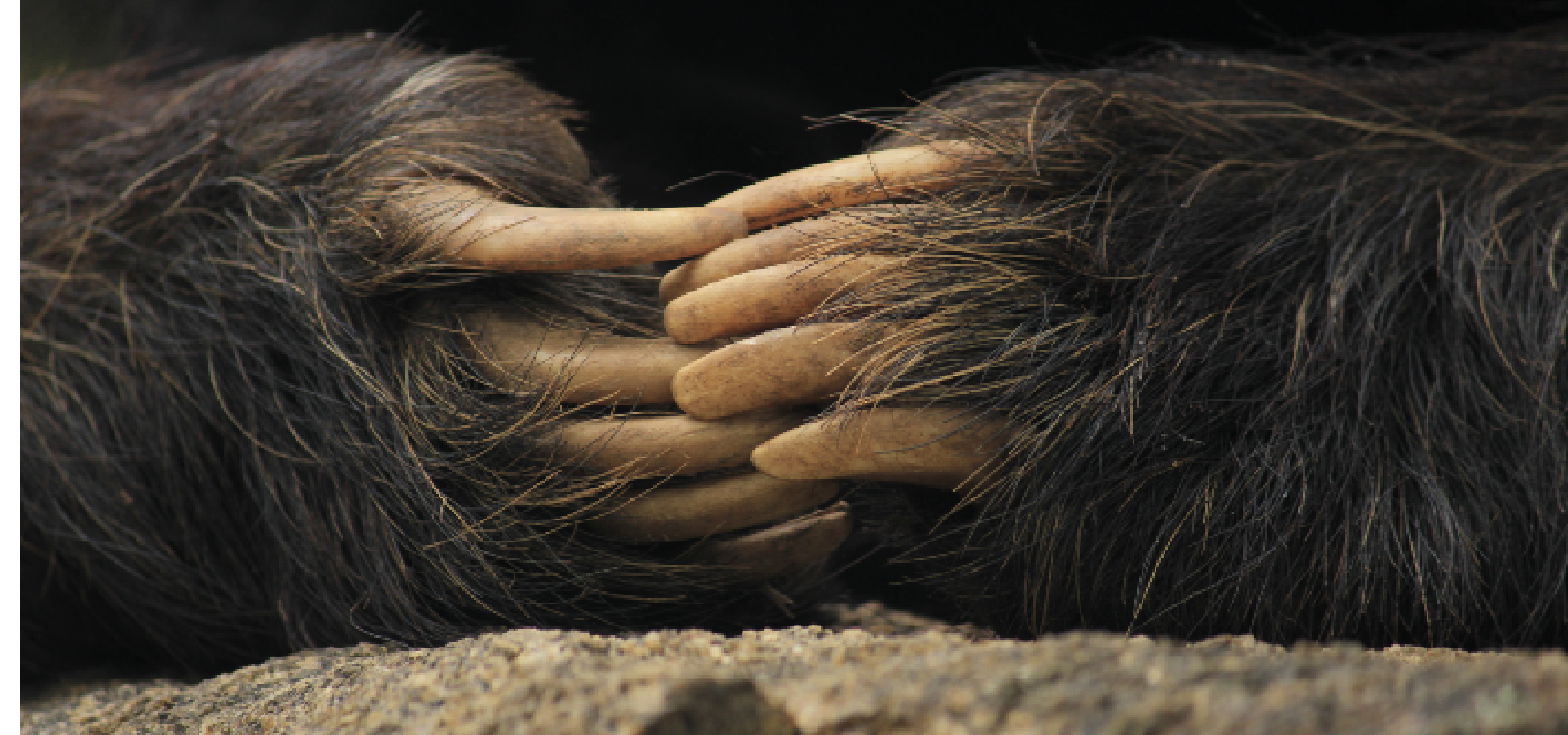Sloth bears have fascinating personalities that may defy their name. Despite not being related to sloths, these bears are extremely agile and far from being lazy. The credit for their misleading moniker goes to George Shaw, a European zoologist, who erroneously associated the bear’s extended, sturdy claws with those of tree sloths. Bears are known to have large claws and massive paws. While the terms “claws” and “paws” are often frequently used interchangeably when discussing bears, they actually refer to two different parts of the bear’s anatomy.
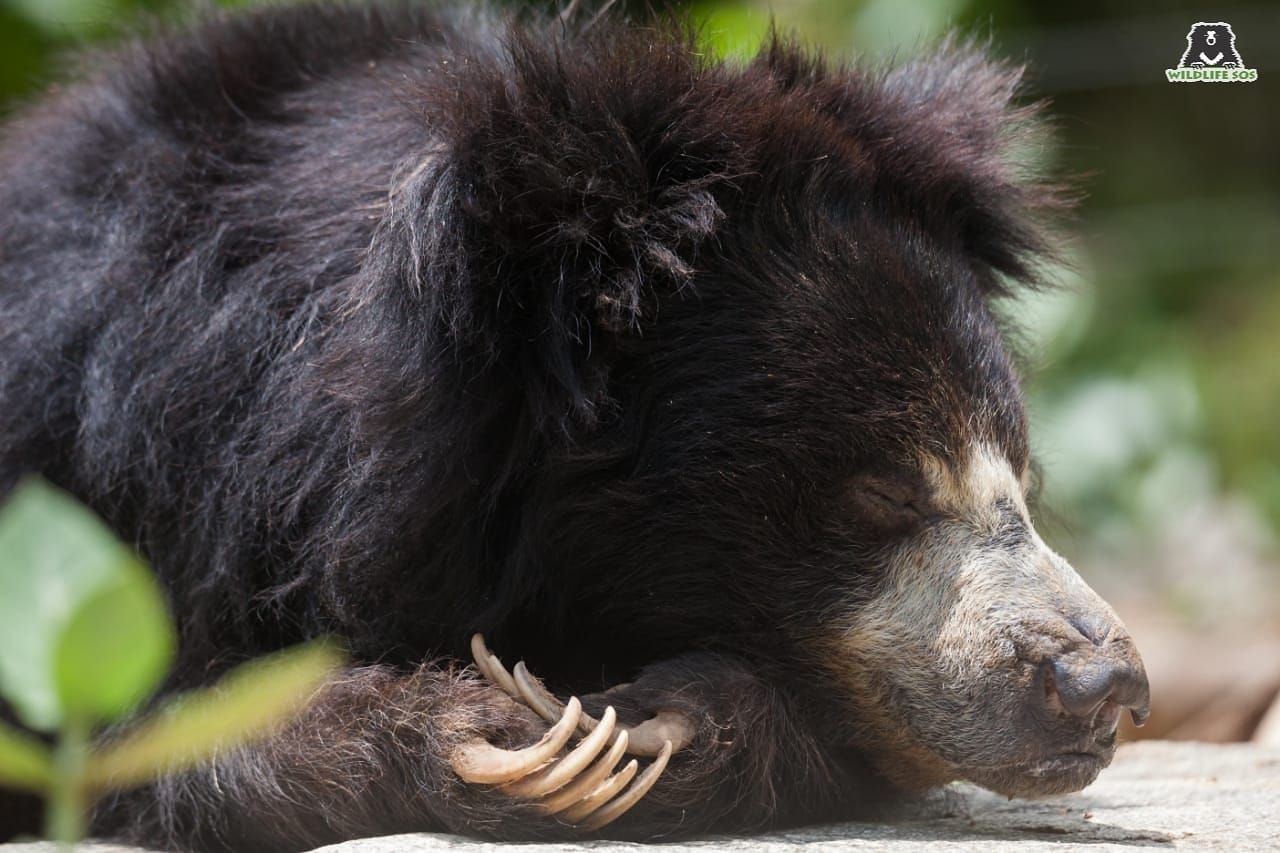
Claws, Paws, and Talons: What is What?
Bears are masters of adaptability, with their paws and claws serving as incredible tools that enable their survival in diverse environments. The bear’s paws can be compared with versatile off-road tires; the thick and padded soles help them to effortlessly navigate rocky terrain, sandy shores, and muddy grounds. Meanwhile, the bear’s sharp, curved claws give a secure grip while climbing trees and steep slopes. Sloth bears’ claws measure around 3 inches in length and these help them dig into the ground to feed on insects. In the face of threat or any danger, these claws transform into a terrifying deterrent, capable of inflicting serious wounds on opponents. Talons, on the other hand, refer to the sharp claws of predatory birds.
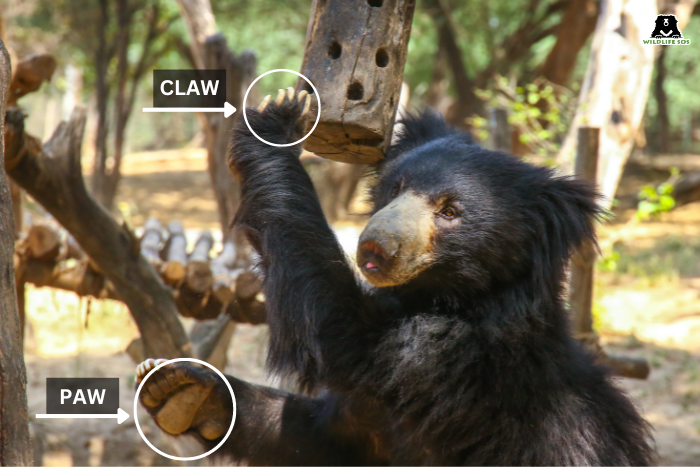
Why Do Sloth Bears Have Long Claws?
The claws of sloth bears exhibit significant distinctions from those of other bear species, such as grizzly bears and black bears. Unlike their counterparts’, sloth bears possess uniquely shaped long and curvy claws. This has aided these bears in becoming skilled foragers in their environment, and have protected them from predators.
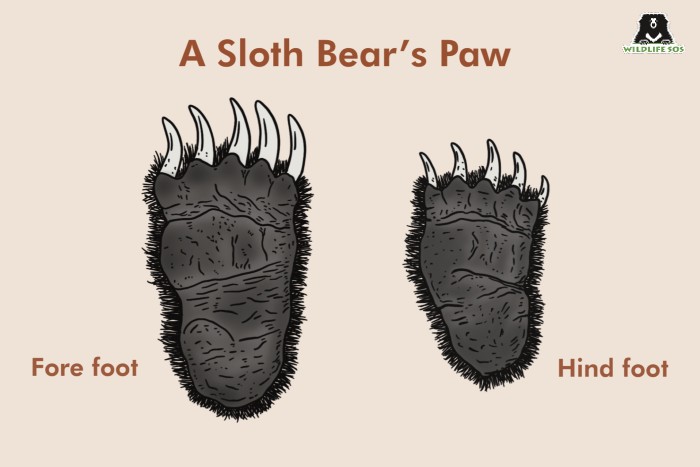
Claws To Feed
The size and shape of sloth bear claws were discovered to be connected to their feeding behaviour. Sloth bears are myrmecophagous, which means that they eat ants, termites, and even beetles. Although they do consume fruits, these insects are their primary source of nutrition. Sloth bears have the ability to consume thousands of ants and termites at once. Their long and strong claws can navigate through termite mounds and ant nests easily. Another interesting fact is that sloth bears have no upper incisors. Their mouth therefore acts as a suction device to pull in the bugs into their mouth!
Claws To Defend Themselves
According to research conducted by Wildlife SOS, sloth bear interactions with people are predominantly defensive in nature. Humans are not seen as prey by sloth bears, and there is no known example of sloth bears attacking humans in a predatory manner. Instead, sloth bears use their claws to defend themselves against predators and threats. Tigers are their major and most feared predators, as are other animals such as wild dogs, wolves, jackals, and leopards. The sloth bear is also known to be extremely protective of its territory, which makes the bear attack intruders in defence. When a sloth bear detects a threat, it may rise up on its hind legs to show off its powerful forepaw claws.
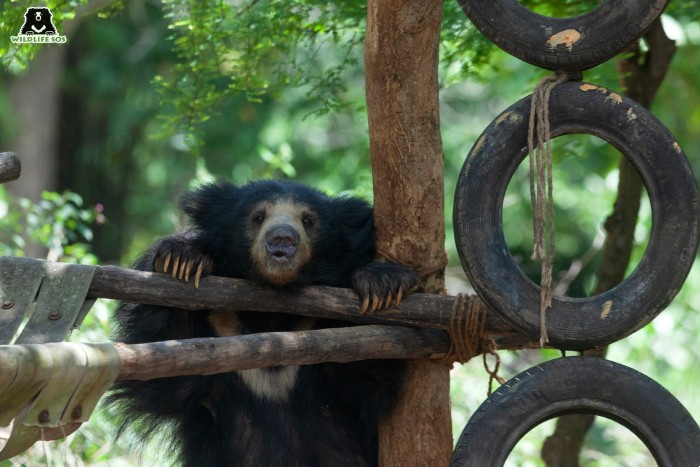
Bears are fascinating mammals, and awareness about them is the first step towards conserving this species. Hundreds of sloth bears in India have been subjected to the cruel ‘dancing’ bear practice and mistreated for years. At all of Wildlife SOS’ bear rescue facilities, the teams have worked relentlessly to provide 628 rehabilitated bears the freedom, dignity, and care they need.
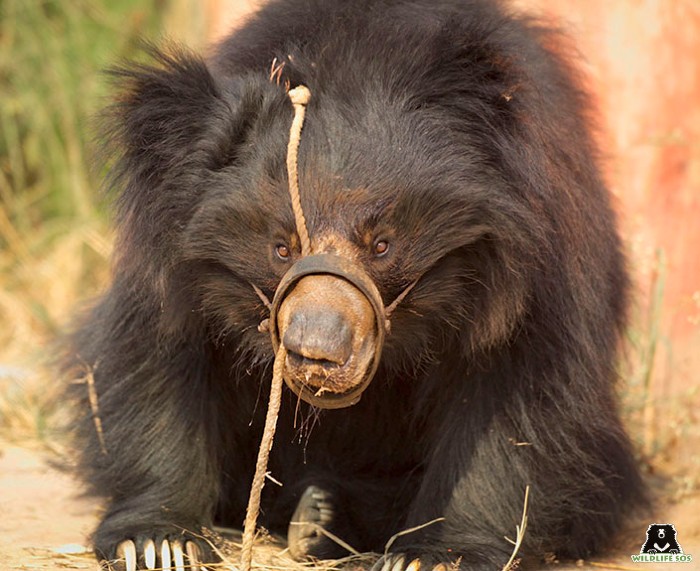
To support Wildlife SOS’s work towards the upkeep of rescued sloth bears, consider becoming a monthly donor. You can also sponsor the long-term care of our rescued animals.

